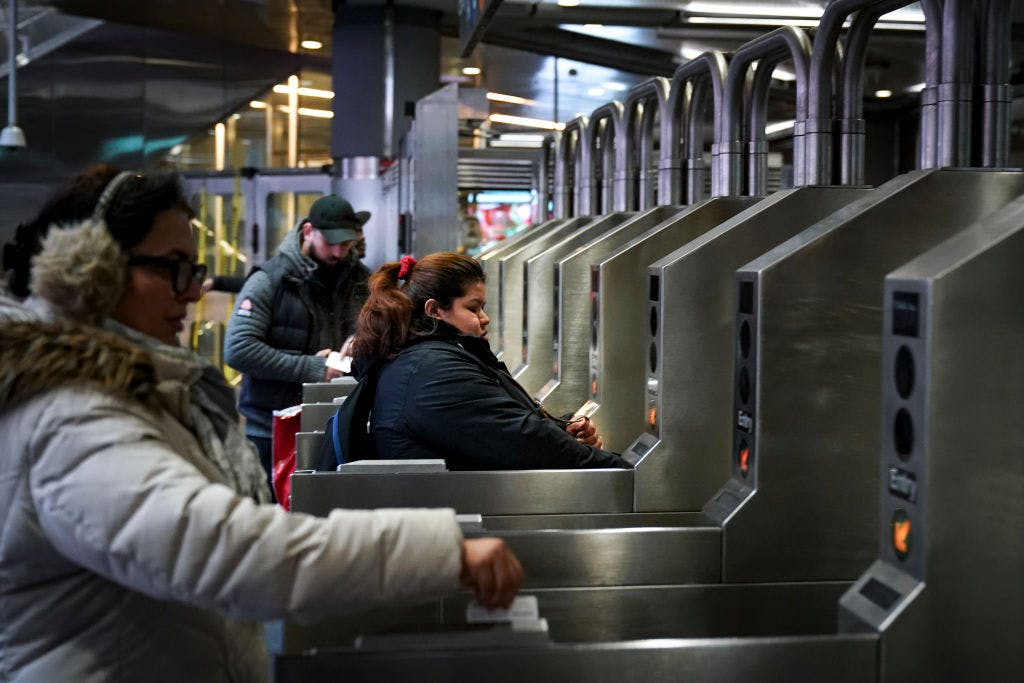It Turns Out Congestion Pricing Isn’t Needed in New York
What the MTA lacks is not money but better management, which could bring in more than slapping a toll on drivers into Manhattan.

Talk about a government scam. As the Metropolitan Transportation Authority pushes to extract a new $23 toll on drivers for the privilege of entering the dying borough of Manhattan, a new report is being issued by watchdogs at the Empire Center. They are exposing how the MTA’s overtime costs are running to some $1.3 billion a year — a staggering 30 percent more than the MTA hopes to gouge from “Congestion Pricing.”
It’s further evidence that if the MTA were to put its house in order, the new tolls would be unnecessary. We’ve already noted how the MTA’s failure to enforce turnstile jumping laws is costing the agency $690 million a year. Outmoded work rules demanded by the MTA’s labor unions are adding at least another $100 million a year in costs. Yet the agency has the gall to boost, as they just did, the price of a subway ride to $2.90 a trip.
If one factors in the overtime bloat disclosed by the Empire Center, it’s clear that a properly managed MTA could not only forgo the new congestion tolls, but actually cut fares on subways and trains. We’re not holding our breath on the prospects for reform of the unaccountable agency run by unelected officials. The overtime numbers evince an agency that appears to have lost control of its core managerial function — supervising its employees.
It’s no wonder the MTA has been trying to keep the overtime numbers from public view. The Empire Center has had to battle in the courts just to get the MTA to disclose its overtime expenses. The $1.3 billion in overtime costs last year represents an increase of some 20 percent over the prior year, Empire reports, and are nearly a record high for the agency. Some 566 MTA employees earned at least $100,000 in overtime in 2022.
The overtime costs, at the expense of transit riders and taxpayers, are a boon for many MTA employees. Some 1,133 of them “more than doubled their 2022 regular pay with overtime,” the Empire Center reports, “up from 835 in 2021.” The increase in overtime costs is the equivalent to just about half of the increased revenue expected “next year from the MTA’s just-approved toll and fare hikes,” which will sock riders $369 million, the watchdog notes.
Union work rules are a big reason for the exorbitant overtime costs across the MTA, but especially at the Long Island Railroad. The labor contract, a recent inspector general’s report disclosed, “limits the railroad’s ability to regulate who gets to work overtime hours,” the Daily News reported. That means instead of spreading out work hours among the MTA’s ample work force, employees with the most seniority get first dibs on overtime.
Even putting aside the expense of overtime, the relative handful of MTA employees “working excessively long overtime shifts,” the News adds, “pose a threat to themselves and to public safety.” Some MTA employees have even been convicted of fraud, like Frank Pizzonia, who racked up “outrageous overtime without doing any work.” The son of a reputed Gambino crime family figure, Pizzonia made more than $300,000 without working.
The MTA concedes that “long standing union agreements” mean that “the distribution of overtime among employees is determined by seniority which can result in some employees getting a disproportionate share,” as a spokesman, Aaron Donovan, tells us. The agency vows it “will continue to look for ways to control overtime,” yet it’s been making the same pledge for years, and the problem is only getting worse.
That is no way to run a railroad. “Every dollar the MTA spends on overtime is a dollar that can’t be spent improving or expanding service,” the Empire Center’s Ken Girardin tells us. “The recent tax, toll, and fare increases mean New Yorkers will be paying more for less than what they’d get almost anywhere else in the world.” If the MTA can’t fix its finances without more taxes, not to mention new tolls, why not give the private sector a chance?

